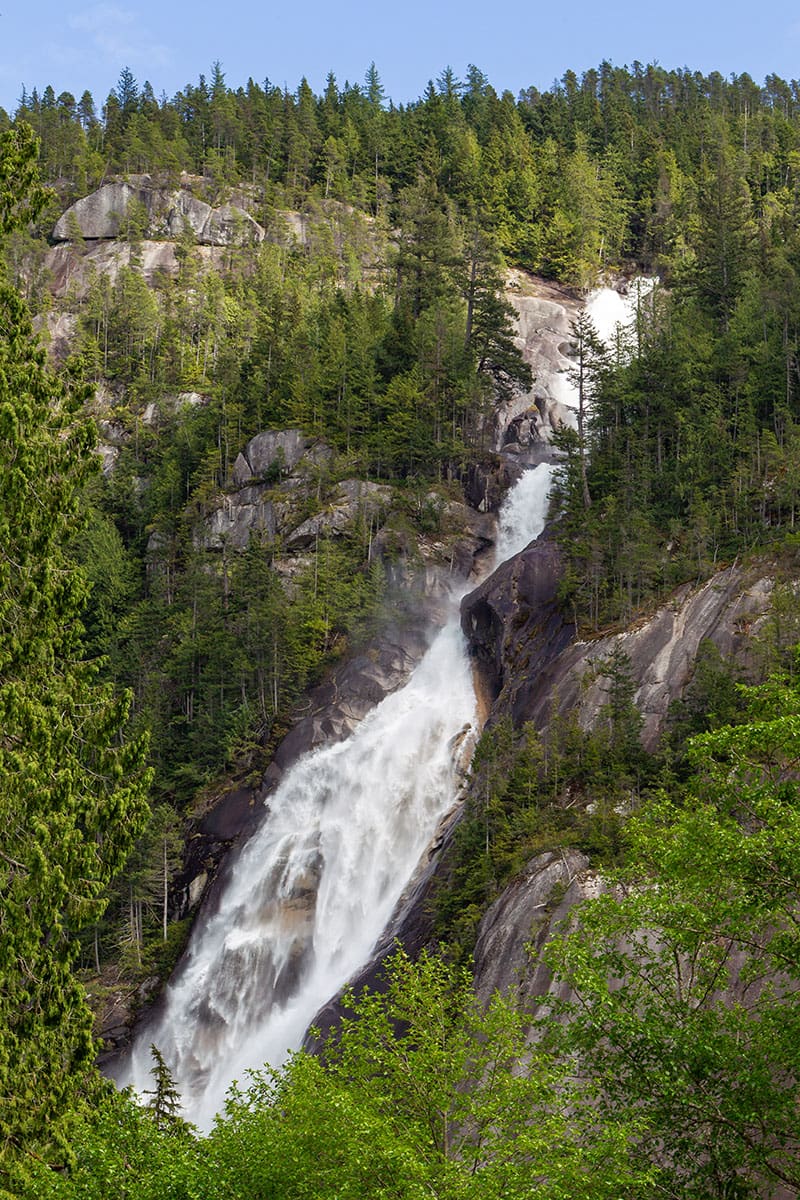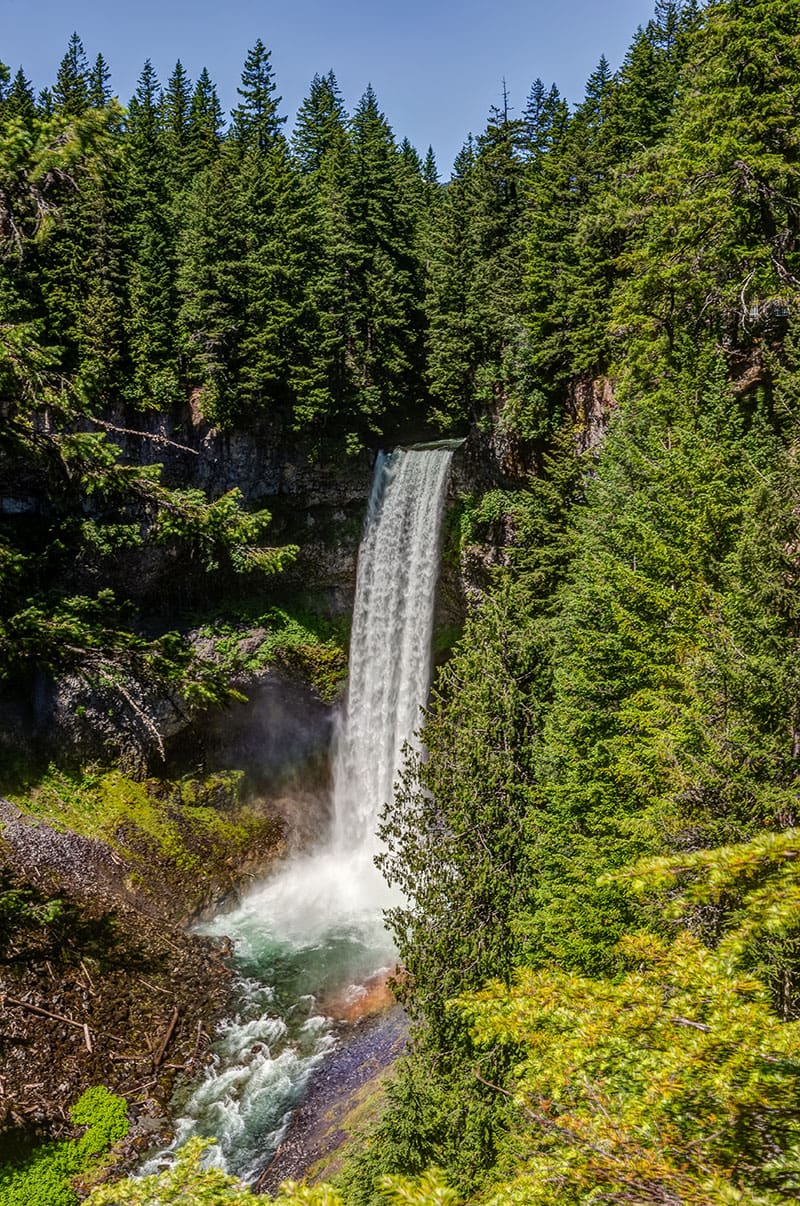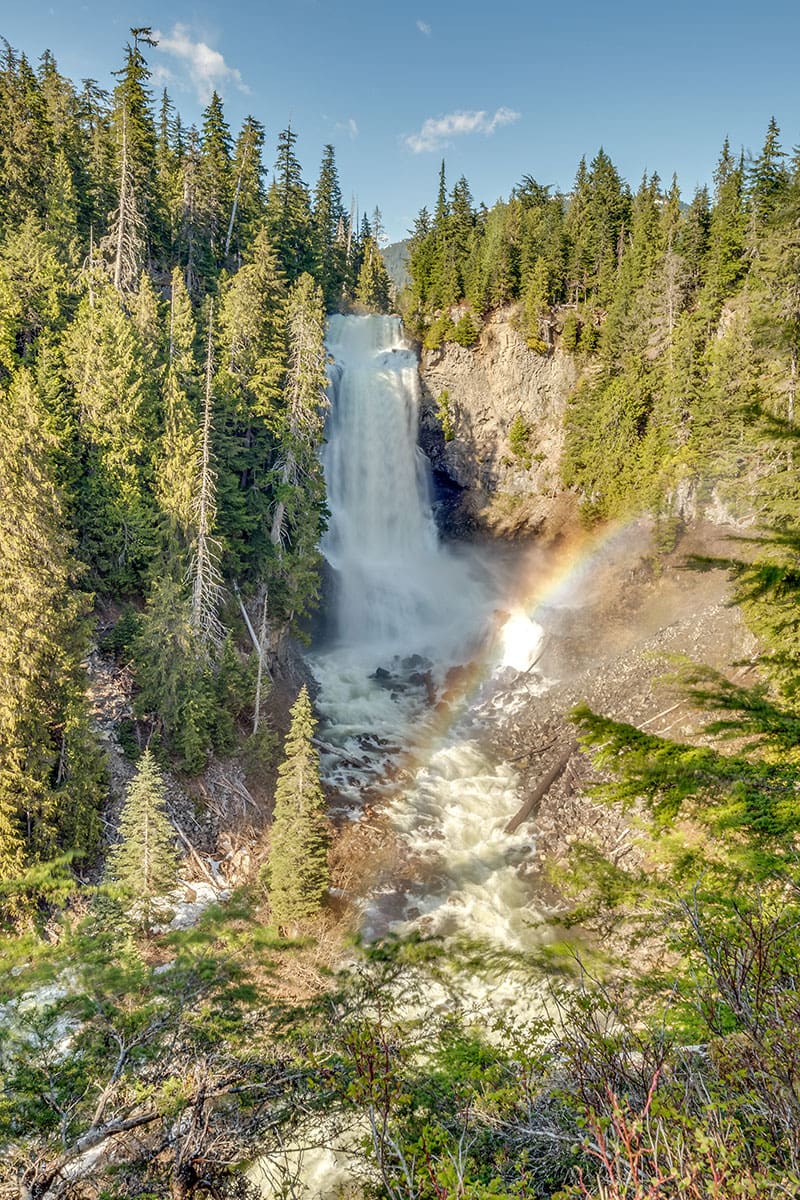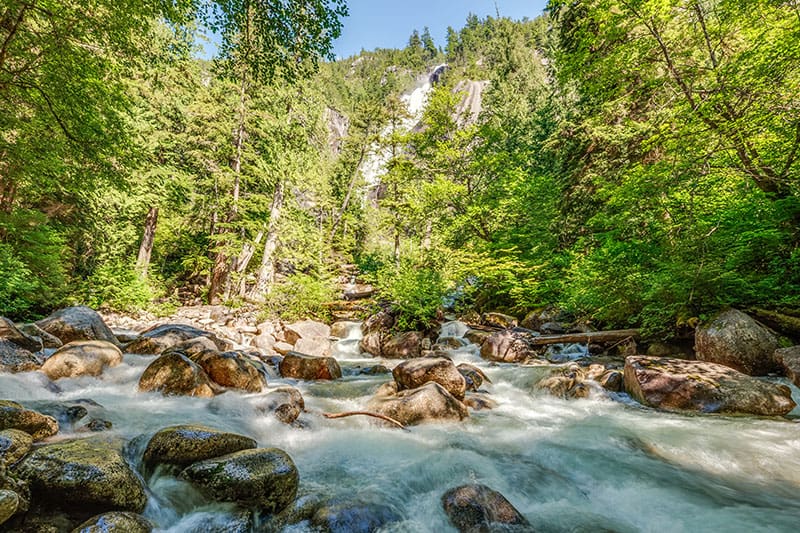Exploring Sea to Sky’s
Iconic Waterfalls
By Katherine Fawcett / Images by Joern Rohde

Shannon Falls: The Showstopper
Just minutes south of Squamish, Shannon Falls tumbles an astonishing 335 metres (1,099 feet) over granite cliffs, making it the third-highest waterfall in B.C. It is named after William Shannon, a brickmaker who settled nearby in the late 19th century and used the local clay for his trade. These dramatic falls originate from Mount Habrich and Sky Pilot Mountain, fed directly from Shannon Creek, and are best viewed from the easy, well-maintained trails in Shannon Falls Provincial Park.
Local Tip: Visit early in the morning or on a rainy day, when the crowds are thinner. Explore the forest trail to the falls, which runs alongside the creek and through stands of western hemlock, Douglas fir, and western red cedar (rather than the paved trail) for a more serene experience.
bcparks.ca/shannon-falls-park


Brandywine Falls: A Plunge Through Time
Further north, 18 kilometres south of Whistler, Brandywine Falls plunges 70 m (230 ft.) into a breathtaking, cavernous gorge. Formed by glacial and lava flows, the cliffs here offer a cross-section of ancient geology. The falls' name has a more playful origin: According to local lore, two surveyors, Jack Nelson and Bob Mollison, made a bet over the waterfall’s height, staking a bottle of brandy and a bottle of wine. The one who guessed the closest won the bottle of brandy. And… the name stuck.
Local Tip: Take the short 10- to 20-minute walking trail to the viewing platform for a perfect panorama. On the way back, branch off onto the Swim Lake Trail for a quieter forest escape, and keep an eye out for the rare northern red-legged frog, a provincial “blue-listed” species at risk. On-leash dogs are welcome here.
bcparks.ca/brandywine-falls-park

Alexander Falls: A Hidden Gem
Tucked away in the Callaghan Valley near Whistler Olympic Park, 24 km southwest of Whistler, Alexander Falls on Madeley Creek is a multi-tiered, 43 m (141 ft.) dramatic cascade over rugged granite steps, and is 12 m (40 ft.) wide at its widest point. Although easily accessible by car, this spot is quieter and often overlooked by resort crowds, featuring a large, wheelchair-accessible viewing platform. The falls were named for Alexander Philip, an early surveyor and prospector in the area.
Local Tip: Bring binoculars — this area is home to black bears, eagles, and in early summer, vibrant wildflowers that fill the surrounding meadows. As you drive back down the Callaghan Road, you will be rewarded with stunning views of Black Tusk.
sitesandtrailsbc.ca

Nairn Falls: Power and Poetics
Just south of Pemberton, a 20-minute drive north of Whistler, Nairn Falls delivers a unique spectacle. These falls aren’t a free-falling drop, but a fierce channeling of the glacier-fed Green River through narrow rock walls. The 60 m (197 ft.) falls have carved deep bowls into the canyon — a dynamic display of waterpower. The name honours local landowners from the 19th century, though the area has long been known to the Lil’wat Nation as a place of spiritual significance.
Local Tip: The 1.5 km trail to the falls is a moderate walk, but the rocks can be slippery, and some ledges are steep and narrow, with raised tree roots, so sturdy shoes with a good grip are essential. For an extended excursion, pair it with a visit to nearby One Mile Lake for a picnic and to take a refreshing post-hike dip.
bcparks.ca/nairn-falls-park

